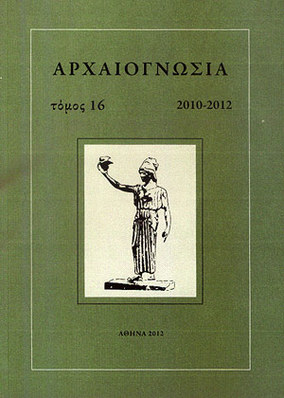Παραστατικά μοντέλα στον αρχαίο ελληνικό στοχασμό
Part of : Αρχαιογνωσία ; Vol.1, No.1, 1980, pages 135-151
Issue:
Pages:
135-151
Parallel Title:
Descriptive models in the ancient Greek thought
Author:
Abstract:
This study is based upon the methodological presupposition that an understanding of the philosophical ideas and theories can be succeeded by researching and finding connections between its material content and the process of expressing it. Thus, there are analysed three separate types of exemplary representations or models that have been used by different philosophers in ancient Greece (Pre-Socratics, Plato, Aristotle). These are systematic references to: a) the social and political reality b) the technical and artistic reality c) the natural reality as we perceive it in immediate way. The main functional characteristics of these descriptive models are : a) the correspondence between the familiar and the unknown b) the proportionate description upon a structure or a mechanism c) the underlying hypothetical ideas (as ideas of law and order, causality and intentionality, evolution and development). In such a method we are not concerned with the philosophers'' theories only as cognitive actions that have been completed at sometime but also as functions of thought, that can be repeated on our effort of understanding them. Actually, what inspires our interest is not so much «what» but thow» those philosophers were thinking
Subject:
Subject (LC):




